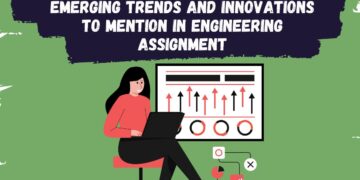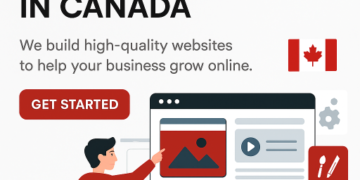Introduction
In the digital age, user experience (UX) and user interface (UI) design have emerged as fundamental pillars of successful digital products. Companies now realize that good design is not just about aesthetics; it’s about usability, efficiency, and delight. “UX UI Design Services” have become essential for startups, enterprises, and agencies that want to deliver seamless, user-centered experiences across websites, apps, and software solutions. This comprehensive guide explores what UX UI design services entail, why they matter, how they work, key deliverables, benefits for businesses, and how to choose the right service provider.
What Are UX UI Design Services?
UX UI design services are professional offerings aimed at creating intuitive, engaging, and user-friendly digital interfaces. UX (User Experience) design focuses on understanding user needs, behaviors, and journeys to ensure that the product is functional, accessible, and satisfying. UI (User Interface) design focuses on the look, feel, and interactive elements that guide users through a product. Together, UX and UI design services encompass research, strategy, wireframing, prototyping, visual design, and testing to deliver solutions that align with business goals and user expectations.
Key Components of UX UI Design Services
User Research and Analysis: Effective design starts with understanding the target audience. UX UI design services include qualitative and quantitative research such as interviews, surveys, and analytics reviews to uncover user pain points, goals, and motivations. This research informs every design decision. Information Architecture (IA): Organizing content and features in a logical, user-friendly manner is crucial. Designers create sitemaps and flows that help users find what they need effortlessly. Wireframing: Low-fidelity wireframes outline the structure of screens without distractions from visuals. This stage helps define functionality and layout. Prototyping: Interactive prototypes allow stakeholders and users to test and experience the flow before development. This reduces costly revisions later. Visual Design: UI designers craft visually appealing interfaces, choosing colors, typography, iconography, and imagery that reinforce brand identity and usability. Usability Testing: Testing designs with real users helps validate assumptions and uncover issues. Iterative improvements ensure the final product is intuitive. Interaction Design: Motion, transitions, and micro-interactions make interfaces feel responsive and engaging, improving user satisfaction. Design Systems: Consistent components and guidelines enable scalable design across products and teams.
Why UX UI Design Services Matter
In a world with endless digital choices, user expectations are higher than ever. Slow, confusing, or unattractive products quickly lose users to better-designed alternatives. UX UI design services help businesses: Improve Customer Satisfaction: By understanding and meeting user needs, companies reduce frustration and increase loyalty. Boost Conversions: Intuitive interfaces reduce barriers to purchase, signup, or other desired actions. Reduce Development Costs: Catching usability issues early saves time and money on rework. Enhance Brand Perception: Beautiful, consistent design strengthens trust and professionalism. Increase Engagement: Smooth, rewarding interactions keep users returning and exploring more features. Gain Competitive Advantage: In crowded markets, better design can be the difference between success and failure.
The UX UI Design Process Explained
Discovery and Research: Every great design begins with understanding. The design team collaborates with stakeholders to define goals, analyze competitors, and study target users. Methods include user interviews, surveys, analytics audits, and heuristic evaluations. Ideation and Strategy: Armed with insights, designers brainstorm solutions and create user personas, customer journeys, and information architectures that reflect user needs and business objectives. Wireframing: Designers build skeletal layouts that map out content, features, and navigation. Wireframes help align stakeholders before investing in visuals. Prototyping: Interactive prototypes simulate user flows and interactions. They allow teams to test assumptions, demonstrate concepts, and gather feedback early. Visual Design: The UI design phase adds color, typography, imagery, and brand elements. The goal is to create an aesthetically pleasing, accessible, and consistent interface. Testing and Iteration: Usability tests and stakeholder reviews ensure the design meets user expectations. Designers refine flows, interactions, and visuals based on feedback. Handoff and Support: Final designs, specifications, and assets are shared with development teams. Design services may include ongoing support to ensure implementation quality.
Common Deliverables in UX UI Design Services
User Personas: Fictional profiles representing key user types to guide design decisions. Customer Journey Maps: Visual narratives that illustrate how users interact with the product over time. Sitemaps and User Flows: Diagrams showing the structure and navigation paths within the product. Wireframes: Blueprint-like layouts of pages and screens. Interactive Prototypes: Clickable models that simulate real interactions. Visual Design Comps: High-fidelity designs showcasing the final look and feel. Design Systems and Style Guides: Reusable components, colors, typography, and rules for consistent design. Usability Testing Reports: Findings and recommendations from user testing sessions.
Industries That Benefit From UX UI Design Services
Ecommerce: Conversion-focused design reduces cart abandonment and improves sales. SaaS Products: Intuitive workflows keep users engaged and reduce churn. Fintech: Clear, trustworthy interfaces boost user confidence in sensitive transactions. Healthcare: Accessible, user-friendly apps improve patient engagement and outcomes. Education: Well-designed learning platforms support diverse learners. Travel and Hospitality: Smooth booking experiences increase customer loyalty.
Benefits of Professional UX UI Design Services
Business Growth: Better design leads to happier users and increased revenue. User-Centered Mindset: Professional services ensure you design for real user needs, not assumptions. Faster Time to Market: A clear, validated design reduces development revisions and delays. Reduced Support Costs: Intuitive products lead to fewer help requests and complaints. Brand Differentiation: Unique, polished design helps you stand out in competitive markets.
Highlights of Great UX UI Design Services
User-Centric Approach: Successful agencies or freelancers prioritize understanding real user needs through research. Collaboration and Transparency: Good designers involve stakeholders throughout the process to ensure alignment. Iterative Testing: They embrace testing and iteration to avoid costly post-launch failures. Accessibility Expertise: Great design is inclusive, ensuring everyone can use your product. Scalability: Design systems and component libraries support growth and consistency.
How to Choose the Right UX UI Design Service Provider
Define Your Goals: Are you redesigning a website, building an app, or improving a feature? Clarity helps you find the right partner. Review Portfolios: Look for case studies that show problem-solving skills and results in your industry. Evaluate Process: Ask about their research methods, tools, and collaboration style. Consider Experience: Choose designers familiar with your domain, user base, and technical environment. Prioritize Communication: The best outcomes come from open, frequent dialogue. Check Reviews and References: Validate claims with past client experiences.
Emerging Trends in UX UI Design Services
Voice and Conversational Interfaces: Designing for chatbots and voice assistants requires new interaction paradigms. Inclusive Design: Prioritizing accessibility to serve all users, regardless of ability. Motion Design: Micro-interactions and animations add clarity and delight. DesignOps: Operationalizing design through systems and tools for greater efficiency. AI-Powered Tools: Automating repetitive tasks and enhancing creativity.
Case Study Example
Imagine an ecommerce startup struggling with high cart abandonment. They hire a UX UI design agency that conducts user interviews revealing that the checkout flow is confusing and too long. Designers propose a simplified, one-page checkout with clear progress indicators. They test prototypes with users and refine the flow. The final design reduces friction and aligns with the brand’s colors and typography for trust. After launch, the startup sees a 30% increase in completed purchases and fewer support tickets.
Cost of UX UI Design Services
Pricing varies widely based on scope, experience, and region. Freelancers may charge $30–$150/hour, while top agencies may cost $100–$300/hour. Fixed-price projects for apps or websites often range from $5,000 to $100,000+, depending on complexity. Investing in quality design pays off by reducing development rework and increasing ROI through better user engagement.
In-House vs. Outsourced UX UI Design Services
In-House Design Teams: Best for large companies with ongoing needs. Benefits include deep product knowledge and fast collaboration. Outsourced Agencies/Freelancers: Ideal for startups or one-off projects needing specialized expertise and scalability. Many businesses use a hybrid model, combining internal and external resources to balance costs and capabilities.
Key Tools Used in UX UI Design Services
Research: UserTesting, Lookback, Hotjar. Wireframing: Balsamiq, Whimsical. Prototyping: Figma, Adobe XD, Sketch, InVision. Visual Design: Figma, Adobe Illustrator, Photoshop. Collaboration: Miro, Slack, Notion. Handoff: Zeplin, Figma Inspect.
How to Maximize the Value of UX UI Design Services
Engage Early: Involve designers from the start to avoid misalignment. Share Data and Goals: Transparency helps them design effectively. Embrace Feedback: User testing and critique improve results. Prioritize Features: Focus on high-value experiences rather than overloading with features. Plan for Iteration: Great design is rarely finished in one pass.
Conclusion
UX UI design services are not a luxury—they’re a necessity for any business competing in the digital world. They transform ideas into user-centered, visually compelling, and efficient experiences that delight customers and drive growth. From research and strategy to testing and delivery, professional UX UI designers ensure that products meet user needs and business goals alike. Whether you’re a startup launching an MVP, an enterprise overhauling a legacy system, or an agency serving multiple clients, investing in quality UX UI design services is one of the smartest decisions you can make. Your users will thank you with their attention, loyalty, and conversions.

























